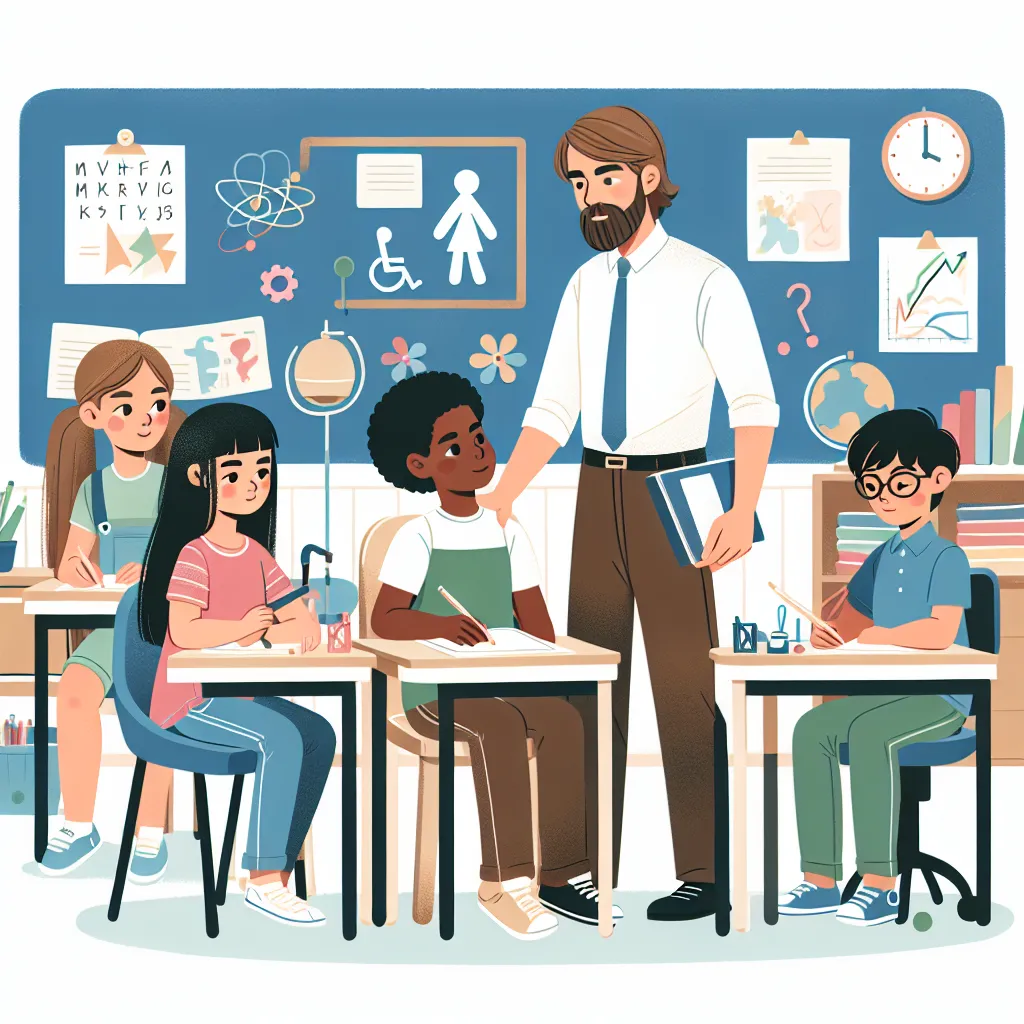Ask AI on The Internet
Question: From your observations, how did the mentor teacher support the children who experience barriers to learning during activities and lessons?
When observing how a mentor teacher supports children who experience barriers to learning, you might notice several strategies being implemented. Here are some of the common approaches a skilled mentor teacher might use: 1. **Differentiated Instruction:** The mentor teacher tailors lessons to meet the varying needs of students. This could include providing different materials, varying the complexity of tasks, or offering additional guidance for specific students. 2. **Scaffolded Support:** The teacher might break down a task into smaller, more manageable steps and offer support at each stage, gradually reducing assistance as the child becomes more confident. 3. **Multisensory Approaches:** Using visual aids, hands-on activities, and auditory instructions helps cater to different learning styles. This makes the material more accessible to all students, including those with learning barriers. 4. **Flexible Grouping:** Students might be grouped in various ways depending on the activity. This can allow for peer support and ensures that students are working at a level that is appropriate for them. 5. **Individualized Education Plans (IEPs):** For students with identified special educational needs, the mentor teacher follows specific goals and strategies outlined in their IEP, ensuring these students receive the tailored support they require. 6. **Formative Assessment:** Regular, informal assessments help the teacher identify students who may be struggling and those who need enrichment. This could involve quick quizzes, one-on-one check-ins, or observation during activities. 7. **Quiet Spaces:** Establishing areas where students can go if they need a break or a quieter environment to focus can help those who are easily overwhelmed or distracted. 8. **Use of Technology:** Implementing tools like tablets, educational software, or audiobooks can provide alternative ways for students to engage with the material. 9. **Clear Instructions and Expectations:** The mentor teacher provides clear, concise instructions and sets transparent, achievable goals. This ensures everyone understands what is expected and reduces confusion. 10. **Parental Involvement:** The teacher maintains open lines of communication with parents or guardians to ensure they are aware of their child’s progress and can support learning at home. 11. **Professional Development:** The mentor teacher regularly engages in professional development to stay informed of the latest strategies and resources for supporting students with learning barriers. 12. **Positive Reinforcement:** Encouraging and recognizing effort and progress, regardless of the outcome, helps build students’ confidence and motivation to engage with challenging tasks. By employing these strategies, a mentor teacher can create an inclusive classroom environment where all students have the opportunity to succeed.
Think your answer is better than the AI's? Post it below.
Other Most Relevant Posts:
 ACTIVITY 5: Teacher's Support for Children with Barriers to Learning.
ACTIVITY 6: Play-Based Activity Elements.
ACTIVITY 6.2: Enhancing Sense of Belonging.
ACTIVITY 7: Interview Questions for
ACTIVITY 5: Teacher's Support for Children with Barriers to Learning.
ACTIVITY 6: Play-Based Activity Elements.
ACTIVITY 6.2: Enhancing Sense of Belonging.
ACTIVITY 7: Interview Questions for
 Integrating 21st-Century Skills in Grade 2: A Mentor Teacher’s Innovative Strategies for Communication, Creativity, Collaboration, and Critical Thinking
Integrating 21st-Century Skills in Grade 2: A Mentor Teacher’s Innovative Strategies for Communication, Creativity, Collaboration, and Critical Thinking
Question Tags
If you want your question answered by an AI, click here.





Post your own comment: